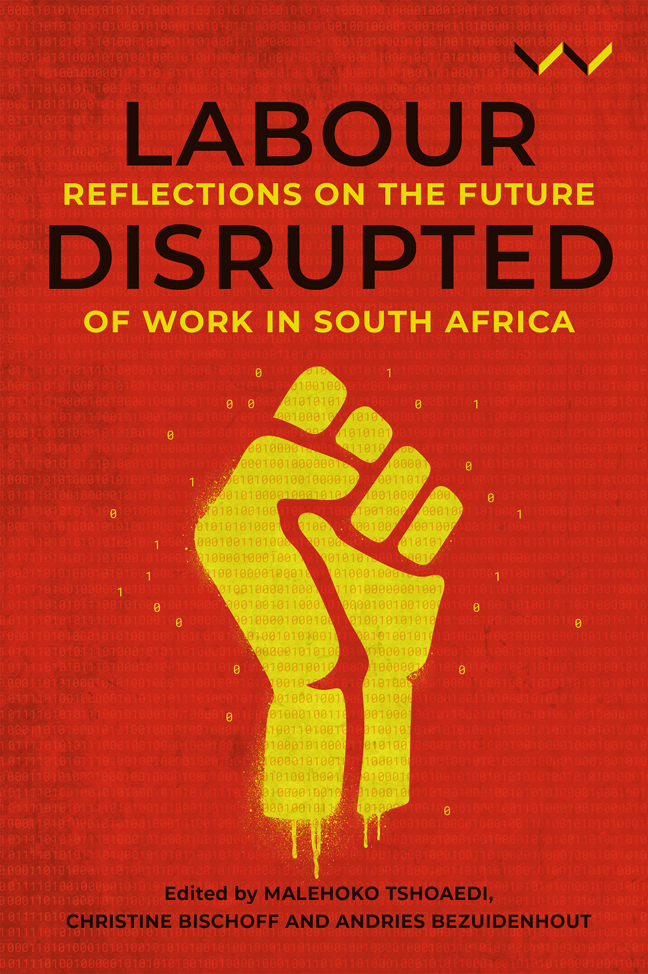Book contents
- Frontmatter
- Contents
- Figures and Tables
- Acknowledgement
- Acronyms
- Introduction: Disruptions and New Directions in South African Labour Studies
- Chapter 1 Fragmented Labour Movement, Fragmented Labour Studies: New Directions for Research and Theory
- PART I Changing Solidarities
- PART II Technology and Work
- PART III New Forms of Organising
- PART IV Labour and Lockdown
- Conclusion: Questions, Answers and New Directions
- Contributors
- Index
Chapter 3 - Youth, Trade Unions and the Challenges of Employment
Published online by Cambridge University Press: 01 March 2024
- Frontmatter
- Contents
- Figures and Tables
- Acknowledgement
- Acronyms
- Introduction: Disruptions and New Directions in South African Labour Studies
- Chapter 1 Fragmented Labour Movement, Fragmented Labour Studies: New Directions for Research and Theory
- PART I Changing Solidarities
- PART II Technology and Work
- PART III New Forms of Organising
- PART IV Labour and Lockdown
- Conclusion: Questions, Answers and New Directions
- Contributors
- Index
Summary
INTRODUCTION
In post-apartheid South Africa, high youth unemployment is a national emergency. Young people are more subject to working poverty and are inclined to lose their jobs during crises. In South Africa, young people struggle to find employment, and they face the greatest risk of losing employment during a pandemic (Espi, Leibbrandt and Rancchod 2021). As South Africa headed to its sixth national democratic elections in May 2019, the key political parties contesting the election promised that youth unemployment would be dealt with, and many parties pledged to create more jobs. The South African government has struggled to put the unemployed into jobs, most especially the youth.
Globally youth unemployment is receiving more attention as young people's engagement in the labour market is declining. The International Labour Organization (ILO 2020) estimates that currently there are 429 million young workers globally. However, between 1999 and 2019, the total number of youth in the labour force had decreased from 568 million to 497 million; presently the global youth unemployment rate is 13.6 per cent. It is estimated that a fifth of young people globally are not gaining labour market experience, earning an income from working, or improving their education and skills. They are not in employment, education or training (NEET). Young workers also face high rates of poverty and are found in non-standard, informal and less secure types of employment (ILO 2020). Many young people in developing economies commence their labour market attachment as unpaid workers contributing to family work before moving on to work on their own. In the era of work becoming increasingly flexible and precarious, coupled with rapid technological change in the workplace, the predicted rise in economic inequality, insecure forms of employment and inadequate job opportunities has the potential to negatively impact the well-being of future generations. The unemployment rate in the Brics countries – Brazil, Russia, India, China and South Africa – was estimated at 6.7 per cent in 2020. About 28.4 per cent of the youth labour force was underutilised, which means that they were either unemployed or in the potential labour force (ILO 2020). The key factor in establishing who to count as unemployed is that the person has to be actively looking for employment and so they are part of the potential labour force.
- Type
- Chapter
- Information
- Labour DisruptedReflections on the Future of Work in South Africa, pp. 73 - 96Publisher: Wits University PressPrint publication year: 2023

